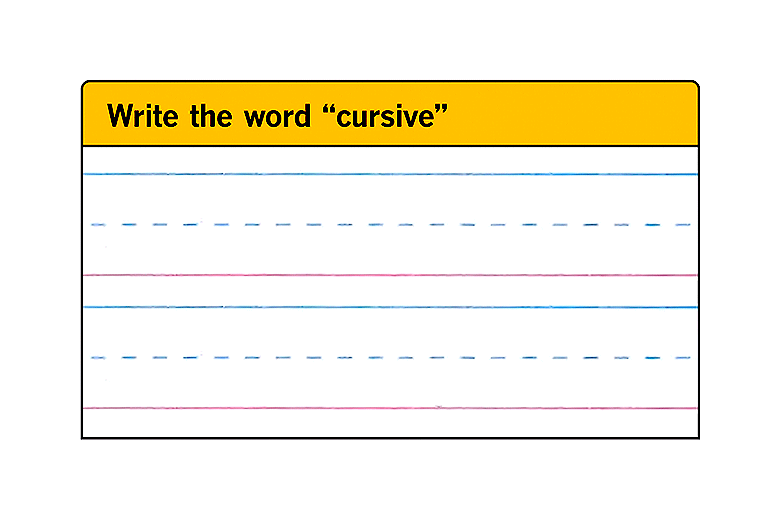Knowledge Gleaned From Pen and Paper
- Share via
WASHINGTON — Beverly East was living in London when she applied for a job that asked applicants to include a handwritten cover letter with their resumes. When she got the job as recruitment consultant, she found herself working with people strikingly like herself.
“We were like the Stepford Wives,” said East, 43, referring to the 1975 movie about the production of seemingly perfect homemakers. “There was no conflict, even though we worked under high pressure.”
East asked the owner how she managed to choose people so similar in disposition and personality. “She said, ‘I knew what I was looking for. . . . Remember the cover letter? Well, I had everyone’s handwriting analyzed.’ ”
Stunned, East demanded to see the report on her writing.
“Everything on it was right. It was definitely me,” she recalled.
She asked to meet the handwriting analyst. “I was told she was in Paris lecturing. I knew right away I wanted her job,” East said.
East had always worked in management positions, but she wanted a change. She decided to try graphology, the study of handwriting to shed light on personal aptitude and assess character.
She studied for four years through correspondence courses from the International Graphoanalysis Society in Chicago. She completed her studies in 1987 and became a master graphologist. East also has training that enables her to identify handwriting and uncover forgery.
Today, East, a native of Jamaica, has her own business, Strokes and Slants, in Washington, D.C. That analyst who was lecturing in Paris is now East’s business partner.
Companies hire East to detect forgery, verify the authenticity of handwriting and documents or aid them in recruitment. Individuals hire her for career analysis (to find out their strengths and weaknesses) and compatibility analysis for business partners and couples.
The graphologist moved to Washington from London two years ago with her husband, a lawyer, and a son, Diag, 5.
East knows that some people dismiss graphology as unscientific or unreliable. But she refers to it as “brain-writing,” explaining that signals travel from the brain to the hand and that personality and character are revealed in those signals.
*
Tamara Plakins Thornton, author of “Handwriting in America--A Cultural History,” doesn’t buy that explanation.
“My skepticism really comes from my studying the kinds of examinations graphologists have made over the century,” said Thornton, an associate professor of history at the State University of New York, Buffalo. “Graphologists work on analogy. So they say, ‘If your bar on your T points upward, you’re optimistic and upbeat.’
“It sounds right, but there is no scientific mechanism offered as to why an optimistic person would move his or her hand in that way.”
Her skepticism does not apply to handwriting specialists who identify handwriting or detect forgery. And although she has doubts about graphologists who may try to determine personality, she acknowledged that graphology is “taken quite seriously in some countries, especially on the [European] continent, particularly in Germany and France.”
East’s four-year course included the history of graphology, which dates from the 16th century, and the study of different types of handwriting and paper. Knowing about paper helps a specialist testify about the age of documents or the authenticity of important papers.
“Everybody has a body rhythm, and their handwriting detects that,” East said. “Each handwriting is unique.”
*
Her first major client in the United States, she said, was a hotel chain. “They wanted me to see if documents had been forged by this person they dismissed. They were hoping I would say yes. But I found he had not forged the documents.”
Eventually, the company found out that another manager was responsible.
In an earlier case, East said, a couple who had been living together for five years came to her for analysis before their planned marriage.
“I found temper and the potential for violence in the man’s signature,” East said. “The woman said he had never even raised his voice at her. I was too inexperienced to know that I should not talk to him.”
In a meeting with the couple, the woman told her fiance what East had found in his writing. “Within five minutes, he had punched her out, broken her nose and thrown the table in the air,” East said. The couple did not get married, she said.
Since then, she has relied more upon the training she received through the IGAS. You could say a part of the course is on the manners of interpreting. For example, East said, “you wouldn’t tell a person they are a compulsive liar. You say they misjudge the truth or exaggerate.”
East once advised a newspaper that one of its marketing candidates lacked integrity. It hired her anyway. An official called East later to say the woman had stolen money from them.
East likes to use her skills to help people raise their self-esteem. She helped youths in a job-training program and women in prison see their strengths by analyzing their writing and pointing out the particular potential available to each person.
More to Read
Inside the business of entertainment
The Wide Shot brings you news, analysis and insights on everything from streaming wars to production — and what it all means for the future.
You may occasionally receive promotional content from the Los Angeles Times.









